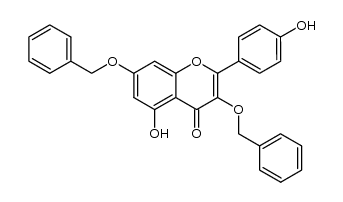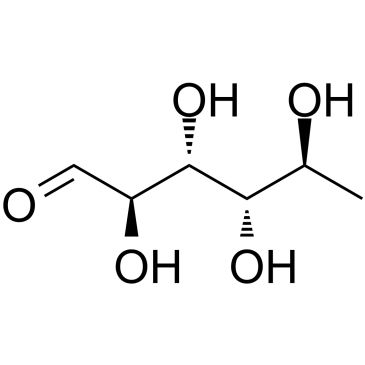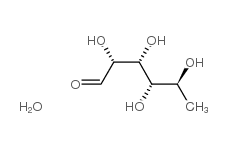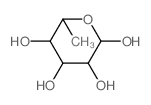482-38-2
| Name | kaempferol 3-O-α-L-rhamnopyranosyl-7-O-α-L-rhamnopyranoside |
|---|---|
| Synonyms |
kaempferol 3-O-alpha-L-rhamnopyranosyl-7-O-alpha-L-rhamnopyranoside
4H-1-Benzopyran-4-one, 3,7-bis[(6-deoxy-α-L-mannopyranosyl)oxy]-5-hydroxy-2-(4-hydroxyphenyl)- 3-[(6-Deoxy-α-L-mannopyranosyl)oxy]-5-hydroxy-2-(4-hydroxyphenyl)-4-oxo-4H-chromen-7-yl 6-deoxy-α-L-mannopyranoside kaempferol 3,7-di-O-α-L-rhamnoside 5-hydroxy-2-(4-hydroxyphenyl)-3,7-bis[[(2S,3R,4R,5R,6S)-3,4,5-trihydroxy-6-methyloxan-2-yl]oxy]chromen-4-one Kaempferol 3,7-L-dirhamnoside Kaemferitrin Kaempferol 3,7-dirhamnoside lespenefril kaempferol-3,7-O-α-L-dirhamnoside Lespenephryl Kaempferol-3,7-O-bis-α-L-rhamnoside Kaempferitrin Kaempferol 3,7-bisrhamnoside Lespedin |
| Description | Kaempferitrin is a natural flavonoid, possesses antinociceptive, anti-inflammatory, anti-diabetic, antitumoral and chemopreventive effects, and activates insulin signaling pathway. |
|---|---|
| Related Catalog | |
| Target |
Insulin Receptor[1] |
| In Vitro | Kaempferitrin activates insulin signaling pathway. Kaempferitrin causes survival rates higher than 90% at 1-20 μM in matured 3T3-L1 adipocyte, and the survival rates decline rapidly at 25 and 50 μM. Kaempferitrin (15 μM) increases insulin receptor beta tyrosine phosphorylation and tyrosine phosphorylation of the insulin receptor substrate 1, and such effects are similar to that of 10 nM insulin. Kaempferitrin (15 μM) also stimulates akt phosphorylation on ser473, and the stimulation can be blocked by a PI3-K inhibitor wortmannin. Kaempferitrin potently exerts the translocation of GLUT4 to the membrane of adipocytes at 15 μM, and this is suppressed by wortmannin. In addition, Kaempferitrin increases the total levels of Glu4 protein in differentiated cells and secreted adiponectin in mature 3T3-L1 adipocytes[1]. Kaempferitrin is cytotoxic to human cancer cells such as HeLa and MDA-MB231 cells, with IC50s of 45 ± 2.6 and 65 ± 2.6 μM, and shows low toxic effects on non-tumorigenic cells. Kaempferitrin (45 μM) induces apoptosis of HeLa cells after treatment for 24 and 48 h, and causes reactive oxygen species (ROS) generation in HeLa cells. Furthermore, Kaempferitrin (45 μM) exerts G1 arrest, causes the expression of proteins associated with intrinsic pathway of apoptosis and activates caspase 3 in HeLa cells[2]. |
| In Vivo | Kaempferitrin (2.5, 10 and 25 mg/kg, i.p.) markedly suppresses the growth of tumor by 40%, 87% and 97%, and decreases tumor weight by 37%, 81% and 95%, respectively in nu/nu mice bearing HeLa tumor. Kaempferitrin also inhibits cell proliferation and extends life span in mice bearing tumor[2]. |
| Cell Assay | Viability assay is carried out by MTT assay. Preconfluent 3T3-L1 preadipocytes are seeded to reach confluence. Kaempferitrin is added in replacement of insulin immediately after confluence (day 0), and the viability is measured 3 h after addition of the compound. Another cell viability assay is performed at day 8. For kaempferitrin combined with insulin treatment, various concentrations of kaempferitrin are added simultaneously with 0.2 nM insulin from day 0 to day 8. Cells without insulin or kaempferitrin treatment during differentiation (day 0 to day 8) are used as control. Finally, to verify the cell viability in matured 3T3-L1 cells treated with insulin or kaempferitrin for 24-48 h, MTT are incubated for 3 h at the end of the 24 h and 48 h period of compound treatments, and survival rates calculated and compared to that without insulin or kaempferitrin[1]. |
| Animal Admin | The nu/nu mice are injected subcutaneously in their backs with HeLa cells (1.5 × 106). Four hours after tumor implantation, groups of five mice receive doses of Kaempferitrin between 2.5 to 25 mg/kg, dissolved in 0.1 mL of 0.9% saline solution, cisplatin (CDDP) 1 mg/kg or paclitaxel (PCX) 1 mg/kg injected intraperitoneally daily over a period of 32 days. The animal control group received 0.1 mL of vehicle solution. Tumors are measured using a vernier caliper, and their size in mm3 is calculated Tumor volume = lenght × width × height2. At the end of the experiments, animals are sacrificed and their tumors are excised and weighed[2]. |
| References |
| Density | 1.7±0.1 g/cm3 |
|---|---|
| Boiling Point | 908.6±65.0 °C at 760 mmHg |
| Molecular Formula | C27H30O14 |
| Molecular Weight | 578.519 |
| Flash Point | 302.8±27.8 °C |
| Exact Mass | 578.163574 |
| PSA | 228.97000 |
| LogP | 1.66 |
| Vapour Pressure | 0.0±0.3 mmHg at 25°C |
| Index of Refraction | 1.725 |
| Storage condition | -20C |
CHEMICAL IDENTIFICATION
HEALTH HAZARD DATAACUTE TOXICITY DATA
MUTATION DATA
|
| Safety Phrases | 24/25 |
|---|
| Precursor 4 | |
|---|---|
| DownStream 6 | |










